Northern Edge of the Mojave
Sarcobatus Flat, named for the hardy desert shrub Greasewood (Sarcobatus vermiculatus), is a basin on the far western edge of southern Nevada that drivers on the highway may think is barren and empty. But there are secrets of beauty and wonder here.
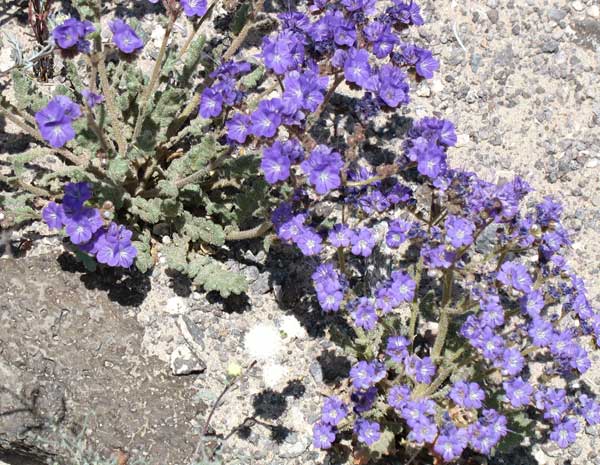
^Colorful phacelias (Phacelia distans) carpet the gravel.
After a wet and rainy winter, wildflowers explode out of the sand in profusion, and the gray shrub cover lights up with colorful blooms. See more wildflowers>>
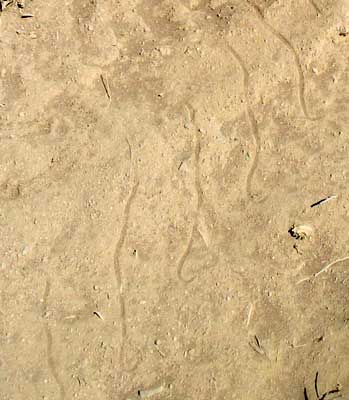 <Sidewinder tracks.
<Sidewinder tracks.
Sidewinders wind over moonlit flats, Desert horned lizards scurry along dusty roads, Zegra-tailed lizards run fast between low shrubs. Fierce Leopard lizards hunt them. Pronghorn antelope feed on bits of greenery, and a few Mustangs roam the wide open spaces. Black-tailed jackrabbits are abundant. We have seen a few Desert tortoises, perhaps their northernmost range in this part of the state.
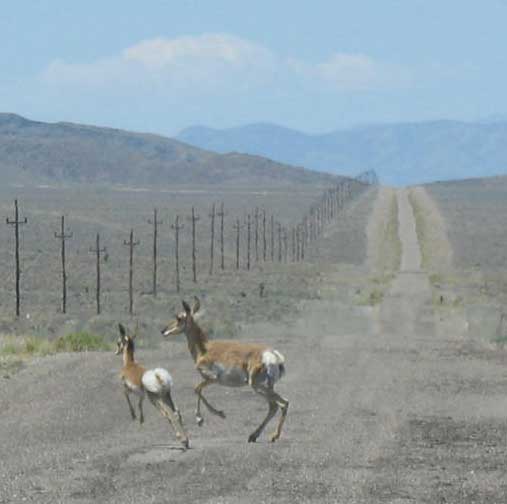
^A Pronghorn antelope doe with her kid romp along a backroad.

^Desert Horned lizards are abundant in Sarcobatus Flat during the warm season. They camouflage well in the gravel.
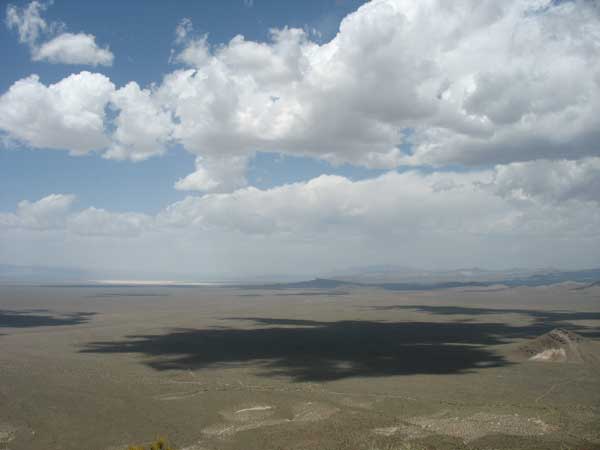
^Aerial view of Sarcobatus Flat from the top of a local peak. The northern limit of Mojave Creosote lies in Sarcobatus Flat as you drive on Highway 95 from Las Vegas toward Tonopah. Other habitats here include transitional shrublands that grade into Great Basin sagebrush, alkaline grasslands, cracked white playas, sand blow-ups, Joshua tree woodlands, "crooked mesas," washes, and some volcanic hills.
Greasewood

The scientific name Sarcobatus comes from the Greek for "fleshy bramble," a good name. A shrub of alkaline flats, playa edges, and seasonally wet basins of the Mojave Desert and Great Basin, Greaswood grows from Mexico to Canada.The "wormy" shaped leaves are deciduous in the cold season, and appear bright green in the spring. In fall the leaves turn yellowish, giving a seasonal look to the wide open spaces where it grows. The branches are spiny, but this does not hinder cattle, elk, antelope, ground squirrels, jackrabbits, and quail from nibbling on them.
These amazing shrubs have deep taproots to get to the groundwater in arid basins, and they survive the salty soils by accumulating the sodium and potassium salts in their roots and leaves along with water -- taste a leaf to get an idea of how salty they are.
The Shoshone and Paiute used the tough branches for arrows, digging sticks, cradleboard edges, and sometimes the seeds for food. The wood is so hard that people also used to use it for arrowpoints and fishing spears. Hopi favored it for throwing sticks to hunt rabbits. The Ute smoked hides over a fire of greasewood to color them yellow. Navajo people chewed the leaves and applied them to bee and ant stings.
According to William Dumnire and Gail Tierney in Wild Plants and Native Peoples of the Four Corners (1997, Museum of New Mexico Press, Santa Fe): "Fifty years ago a pharmaceutical company found that greasewood contains an effective antioxidant, and for a short time this was being extracted on a large scale in southern New Mexico. Antioxidants are now manufactured synthetically" (p.151).
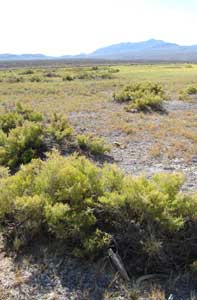
^September greasewood beginning to turn yellow in a saltgrass meadow.
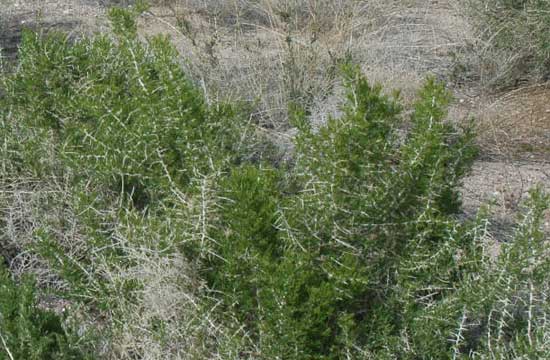
New green leaves in March on the "fleshy bramble."
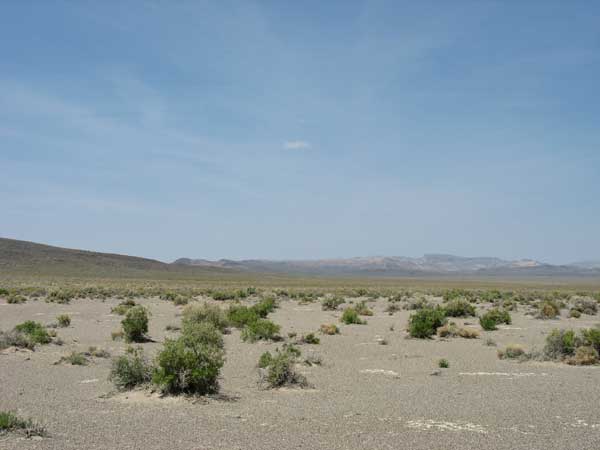
Greasewood at Sarcobatus Flat.
Getting there: Several dirt roads access the area from Highway 95, which is mostly in Nye County, Nevada, east of Death Valley, between Beatty and to north of Scotty's Junction. Please close gates to keep feral burros and cattle off the highway. Managed by Bureau of Land Management and Death Valley National Park partly. High clearance recommended, 4x4 best. Roads can be very dusty, and in wet weather -- muddy.

